From Wylfa to the Tidal Lagoon: Where did it go wrong?
- Published
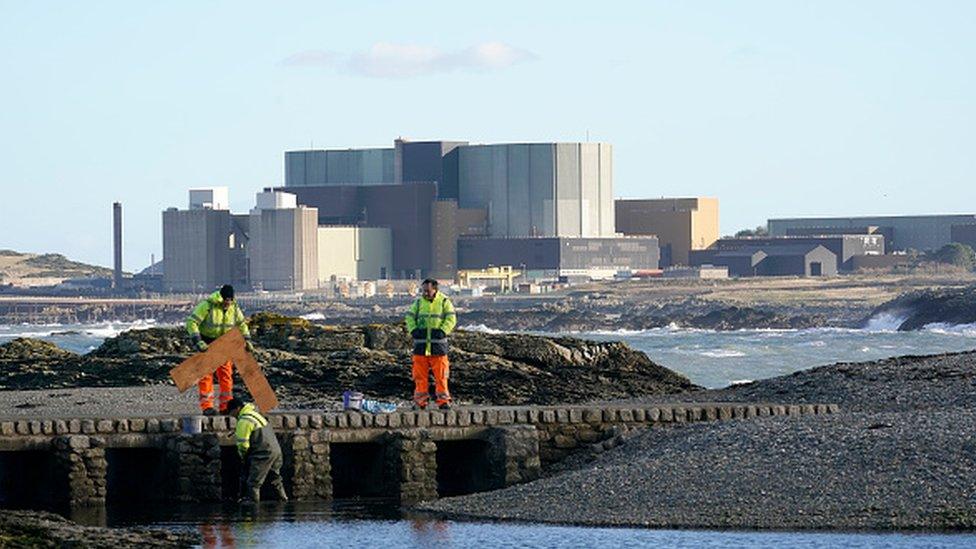
Investment in the Wylfa Newydd Nuclear Power Station is high risk in its initial phase
The Wylfa Newydd nuclear plant this week became the latest high-profile project in Wales that could land on the scrap heap.
The news has raised questions about why projects are failing to materialise.
Experts say it is largely due to bad luck, but add that Wales should learn lessons from projects that never saw the light of day.
"There has to be an investigation into the products investors will take on," said Bangor University's Edward Jones.
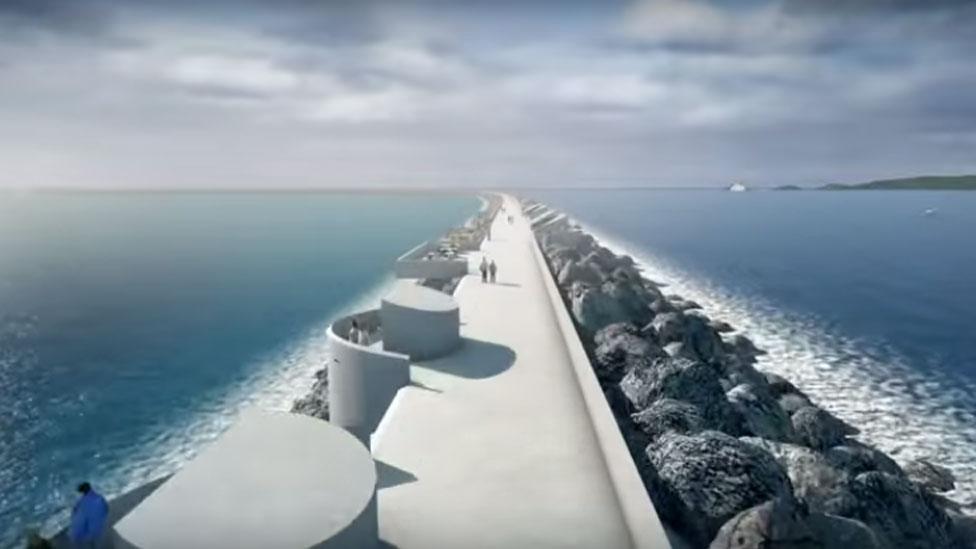
An artist's impression of the Swansea Bay Tidal Lagoon
While Wylfa Newydd was by far the most expensive, other projects such as the Swansea Bay Tidal Lagoon and the Severn Barrage were shelved amid concerns over cost and viability.
"Whether that project was in Wales or not was not the deciding factor," Chris Sutton of CBI Wales said of the Wylfa scheme.
"Each of these decisions is an investment decision, and the return on investment plays a big part."
He pointed out that the Wylfa nuclear project was "absolutely phenomenal" in terms of cost - 10 times the cost of the proposed M4 relief road, another scheme whose future hangs in the balance.
"With Wylfa, the risk is very high in the initial phase," Dr Jones, a lecturer in economics said.
"The appetite is there for established infrastructure that can show it is generating cash flow," he said.
Some of the projects that have been chased in Wales would have taken a long time to get up and running.
"Things have moved on in the financial world, and the pool of private investors here is very small," he added.
But the simple fact of being "on the fringes" of Great Britain can also mean Wales misses out, Mr Sutton argued.
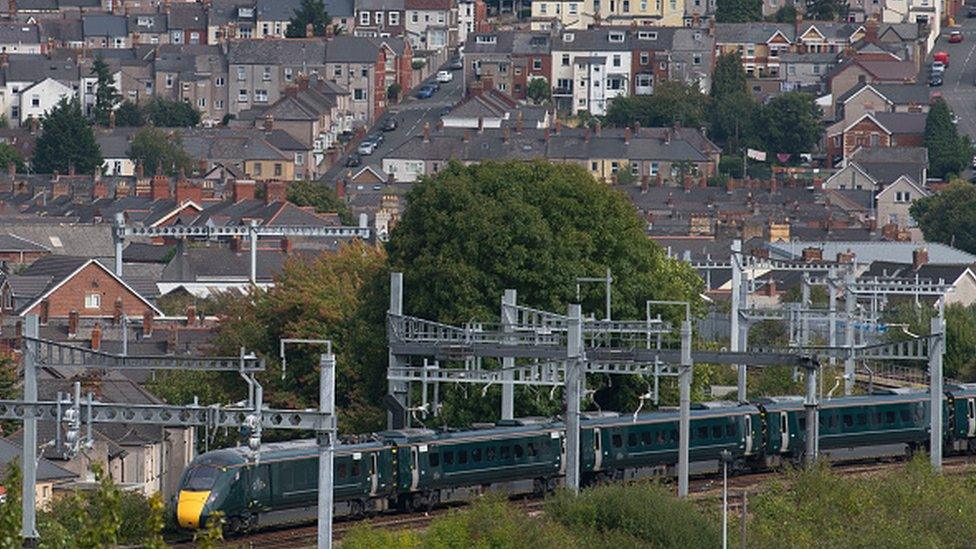
Work to electrify the line from London to Cardiff is under way, but will not go as far as Swansea
Plans to electrify the Great Western Railway line between Cardiff and Swansea were scrapped in 2017.
That decision, Mr Sutton said, could be due to the fact other parts of the project - the route is being electrified from London to Cardiff - have come in over budget.
Then there is the question of whether it will be worth the money.
The proposed Circuit of Wales race track was effectively killed off in June 2017 when ministers rejected a request by the Heads of the Valleys Development Company - the firm behind the project - to guarantee almost half the funding.
The company claimed it would create up to 6,000 jobs in an unemployment black spot in Blaenau Gwent. It would have spent £433m building a racing circuit and a "365-day leisure and business destination".
Investors will come in to Wales, but you need to generate the assets to invest in first, and that is often too high risk, Mr Sutton pointed out.
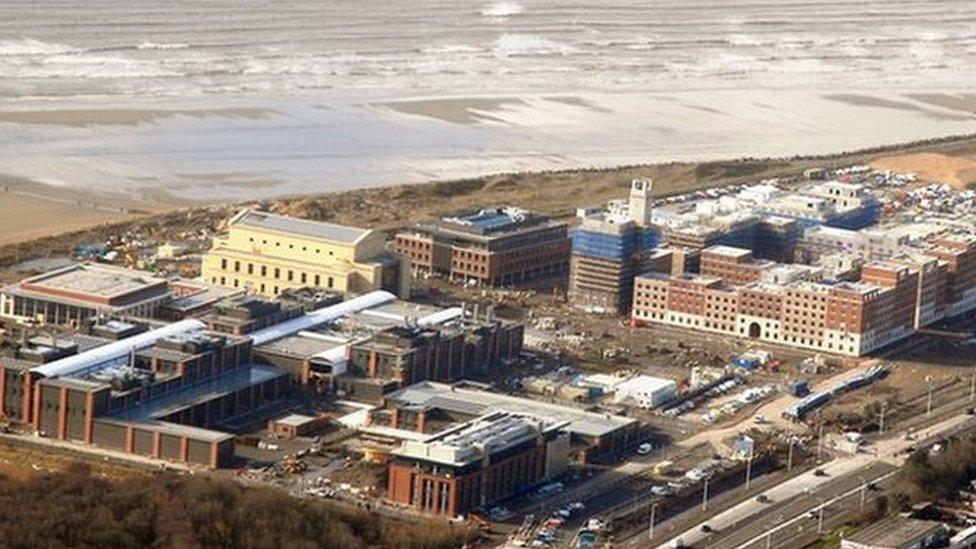
Swansea University's bay campus was opened in September 2015
Success stories
While the headlines have focused on the bad news, there have also been success stories.
The Celtic Manor, near Newport, has seen significant investment creating temporary jobs in construction and permanent jobs at its resort and hotel complex and forthcoming convention centre.
There has also been significant investment into education - Swansea University's £450m Bay Campus - and health, such as the new £350m hospital in Cwmbran, Torfaen.
"There is a willingness to do those schemes of £50m to £100m, but how do you procure projects starting at £1bn?" Mr Sutton asked.
The new National Infrastructure Commission for Wales, which met for the first time in November, may produce some of the answers.
- Published25 June 2018

- Published20 July 2017
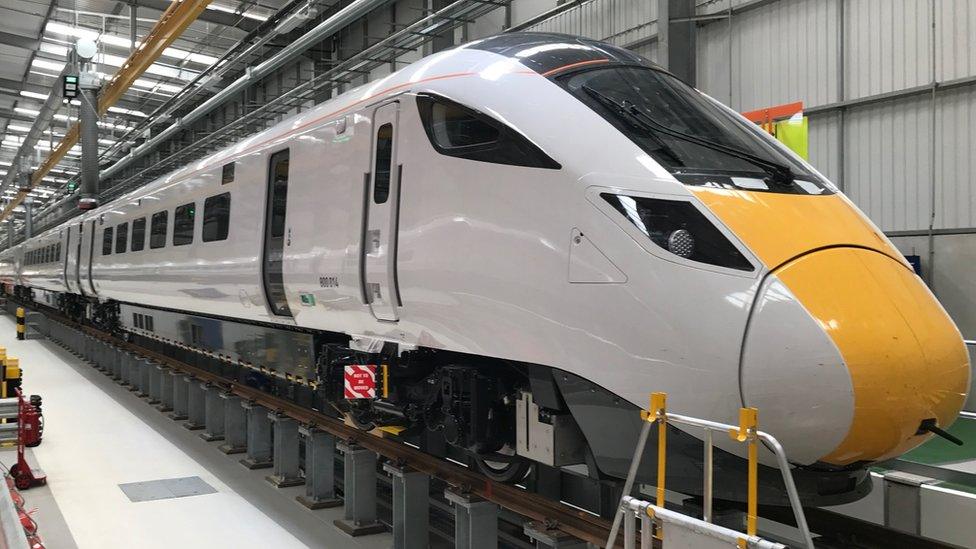
- Published27 June 2017
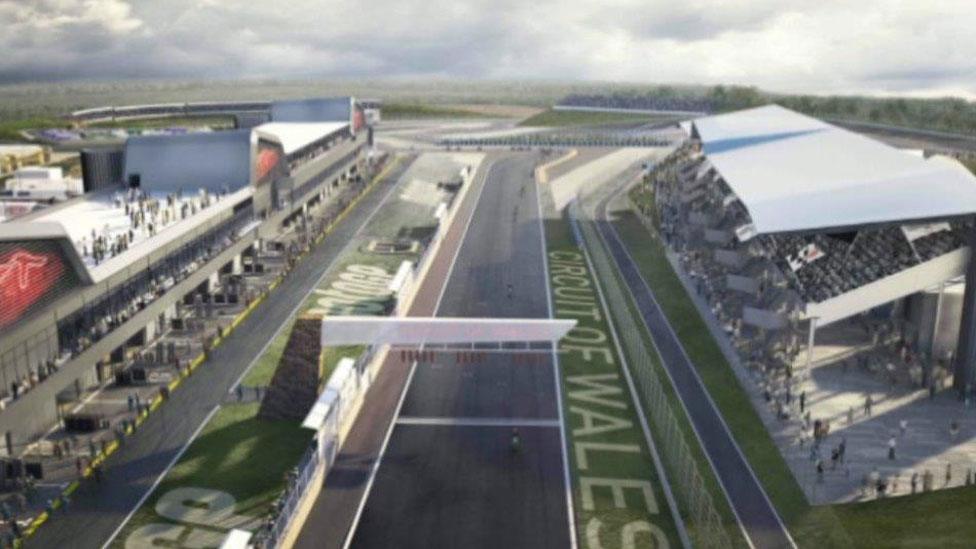
- Published9 September 2013
